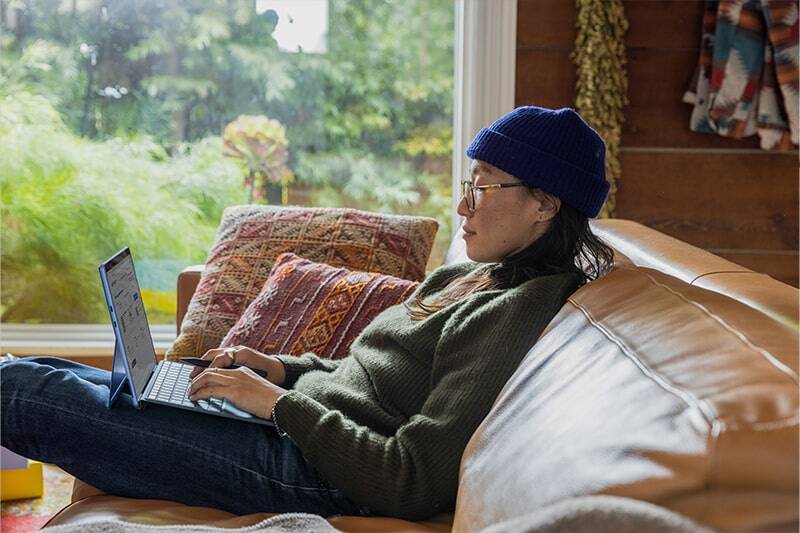Solo Summit Recap: Your 3-Step Framework for Using AI for Your Solo Business
Everybody’s talking about AI. It’s no longer only relevant for the most tech-savvy early adopters—it’s non-negotiable if you want to do more with...
5 min read
 Kat Boogaard
:
Nov 14, 2025
Kat Boogaard
:
Nov 14, 2025

If you’re feeling a little off balance in your solo business, you’re not alone—there’s a lot of change and upheaval right now.
 “The economy is changing, technology is changing,” explained Jason Feifer, Editor-In-Chief of Entrepreneur Magazine, during his keynote session for Lettuce’s recent Solo Summit. “It raises a lot of big questions about how well we can build and grow this solo business.”
“The economy is changing, technology is changing,” explained Jason Feifer, Editor-In-Chief of Entrepreneur Magazine, during his keynote session for Lettuce’s recent Solo Summit. “It raises a lot of big questions about how well we can build and grow this solo business.”
For many solopreneurs, panic is the default emotion. Jason said that change “disrupts the thing that we used to know really well,” making it normal to feel like the sky is falling. However, he also stated that “the most successful people are the most adaptable.”
So, how can you view shifting circumstances as more of an opportunity than an obstacle? It’s all about developing a unique personal relationship with change. This helps solopreneurs “grow and build in ways that others can’t and to feel grounded while everything swirls around them.”
If that sounds a little abstract, don’t worry. This guide gives you a detailed understanding of Jason’s framework for developing your own unique relationship with change so you can chart new courses with a sense of possibility (and less panic).
Developing (or improving) a more positive relationship with change involves rethinking three things:
Here’s a closer look at each of those and how you can make them work for your business-of-one.
For most of us, our identity is tangled up with what we do for work. It’s likely well-intentioned—we’re proud of our jobs and what we produce. But when change swoops in and disrupts our “normal,” it causes problems.
“Change doesn’t just feel like a change to our work. It feels like a challenge to our identity,” Jason explained. “And that causes us to want to hold onto what came before instead of being open to what comes next.”
So what’s the answer? Anchoring your identity to something that isn’t as fickle or changeable as your work.
Jason knows firsthand that it’s a tough thing to do. He previously had a lot of his own identity tied up in being a newspaper reporter and then a magazine editor. Yet, through his conversations with solopreneurs for Entrepreneur Magazine, he noticed something: Successful people often didn’t highlight what they did—they highlighted the value they offered.
Put simply, it’s about articulating your transferable value, which Jason described as “the thing that you have that other people always need, no matter what changes.” When you find that, you’re in a much better position to navigate change.
Apply It to Your Solo Business:
Jason said that you can drill down to your transferable value by imagining this scenario we’ve all experienced: Someone comes up to you at a party and asks you what you do for work. You’re going to run yourself through this scenario three times:
As Jason shared, “How would you communicate your value without talking about the specific tasks or roles that you hold?” Using this exercise takes those things off the table and helps you drill down to what matters most. That value can remain constant regardless of what changes come your way.
According to self-determination theory, we all have the same three basic psychological needs. You can remember them using the ARC acronym:
“When we have access to them, we have the foundation for motivation and happiness,” Jason explained. “This is important to understand because, when change comes to your solo business, it disrupts your access to these three basic needs.”
Additionally, this theory is helpful because change can feel overwhelming. “It just feels like a big, amorphous problem,” Jason continued. “You don’t even know where to begin."
Understanding your basic needs helps you get a better grip on why a change (or even the potential for change) feels so threatening to you—as well as what you can do to ensure your needs are met regardless.
Apply It to Your Solo Business:
You can use the ARC framework almost like a checklist in your solo business. When you’re feeling stuck or stressed, run through the acronym and ask yourself:
“If you understand what you need, then you can get what you need when you need it,” Jason said. And that holds true even in times of rapid change.
Most solopreneurs think of change as something that they’re always navigating or reacting to. “But that’s not the only relationship you have with change,” Jason said. “You are also the introducer of change.”
“If you’re a coach or a consultant, you are helping your clients navigate change,” he continued. “If you are a designer, you are bringing new ideas to people. You are constantly, constantly introducing change.”
But Jason says there’s a common mistake: We understand the value of the change (or what we’re offering) so well that we forget it might not make sense to anybody else.
“Instead, what we need to do is build a bridge of familiarity,” he said. He pointed to an example from Wild Foods, a health food company that introduced a product called “Chicken Chips.” The founder noticed that people were only buying the chips when he ran a sample table in the store, allowing customers to try the chips and learn more about them. No sample table meant no sales.
So, the company changed the name from “Chicken Chips” to “Protein Chips.” Sales skyrocketed—and Jason said it illustrates an important lesson. “People don’t like new things,” he explained. “They like better versions of old things.”
“You do not start with the thing that you have,” Jason continued. “You start with them—what they’re comfortable with and familiar with, and then you build a bridge that goes from them to you.”
Apply It to Your Solo Business:
Jason says rethinking your words is as simple as filling in the blanks of this sentence from your client or customer’s point of view:
When [context], I want [solution] so that [benefit].
“The reason for this exercise is that even though you all know this, we stop at the solution,” Jason shared. “We always talk about the solution because that’s the thing we care about. But the problem is that nobody cares about solutions. What they care about is the benefit.”
Understanding the ultimate benefit of what you offer—even if the mechanisms to produce it need to shift—helps you ride the waves of change without all of the self-doubt.
If solopreneurs know one thing, it’s that change is constant—but so is your capacity to adapt.
When you intentionally shift how you think about who you are, what you need, and how you communicate, you start to see change not as something to survive, but as something that can shape a stronger, smarter solo business.
 Ready to take your next step as a solo founder? Download Solo Planning Playbook from Lettuce and Jason Feifer gives you the structure, prompts, and space to think strategically about your business — wherever change takes you.
Ready to take your next step as a solo founder? Download Solo Planning Playbook from Lettuce and Jason Feifer gives you the structure, prompts, and space to think strategically about your business — wherever change takes you.
Get more insights from the experts at Solo Summit by checking out the complete video library.
A newsletter for solopreneurs who build with structure and purpose.
Everybody’s talking about AI. It’s no longer only relevant for the most tech-savvy early adopters—it’s non-negotiable if you want to do more with...
If you want a steady stream of clients, you need more than great work. It takes clarity, consistency, and a willingness to put yourself out there....
As a solopreneur, you’re likely far too familiar with this common trap: If you’re not working, you’re not earning money. And while trading your time...